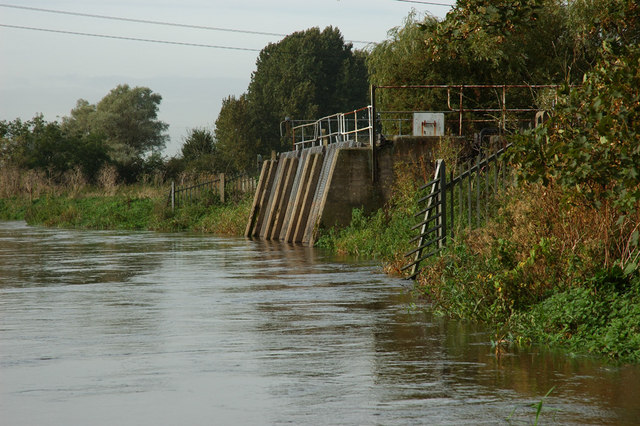~Virtual Newspaper for an Aquatic World~
USDA Names Three Mississippi River Basin Landscapes as Nationally Critical for Conservation
 |
| Critical Conservation Areas (Click to Enlarge) |
Noteworthy @UpperMiss Twitter Postings for the Week
Water Quality -
- Most states in Mississippi River-Gulf of Mexico federal-state hypoxia task force have either draft or final nutrient plans http://ow.ly/xbGzz
- Republicans Set Phoenix Hearing on EPA ‘Water Grab’ (Re: Waters of the U.S.rulemaking) http://ow.ly/xl2RU (see proposed rule here: http://ow.ly/xl2V3)
- UC-Berkley economist in industry-sponsored report: "EPA Fails to Calculate Costs of Clean Water Act Rule" http://ow.ly/xnDnd (report here: http://ow.ly/xnDxj)
- House Small Business Committee Chairman says EPA proposal to regulate small water bodies would ‘drown’ small businesses in new rules http://ow.ly/xqyR0
- USGS: continuous nitrate monitoring across the Nation, including the Mississippi River Basin - Where, How, and Why http://ow.ly/xiMEF
- In states like Wisconsin, opposition to some large dairy farm operations grows after manure spills, improper waste handling http://ow.ly/xj33x
- Department of Natural Resources investigates cause of 1000s of fish killed in southwestern Missouri's Clear Creek http://ow.ly/xlq9Y
- House bill to create National Infrastructure Development Bank Act now has over 100 cosponsors http://ow.ly/xlsmg (Blue Green Alliance media release: http://ow.ly/xltq9)
- Sierra Club files suit in U.S. District Court, claiming LG&E pollutes Ohio River from Louisville coal-ash containment pond http://ow.ly/xoXZ2
- Pre-proposal applications due to USDA by July 14 for Regional Conservation Partnership Program projects http://ow.ly/xkNLl
- AP Regional Conservation Partnership Program story: USDA Seeks Partnerships to Protect Soil, Water http://ow.ly/xl0s1
- USDA Secretary Vilsack: House Appropriations Committee aims to reduce funding for conservation programs would have "some small impact" http://ow.ly/xl1Mr
- Senate Agriculture Committee Republicans seek meeting with EPA Administrator to discuss "constituent concerns" http://ow.ly/xjdYq
- USDA’s National Agricultural Statistics Service releases “Farms and Land in Farms 2013 Summary” http://ow.ly/xnCzT (PDF file)
- Study finds world's food supplies are at risk as farmland becomes concentrated in hands of wealthy elites, corporations http://ow.ly/xoz3v
- Sensors that measure a variety of agriculturally essential soil properties on the go are being developed http://ow.ly/xovX4
 |
| Seven-day low flow streamflow trends (click to enlarge) |
- EPA releases third edition of "Climate Change Indicators in the United States" report http://ow.ly/xnEFm
- May 27 US drought update: Dryness expanded through southeastern Iowa, into east-central Illinois; otherwise Midwest was unchanged. Nebraska drought deepened; Plains otherwise improved http://ow.ly/wmTdv
- Yale researchers: Americans care deeply about 'global warming' – but not 'climate change' http://ow.ly/xkMwP (see the Yale report here: http://ow.ly/xl8VN)
- USGS says its researchers erred in saying Asian carp eggs had been discovered in Mississippi River near Lynxville, Wisconsin http://ow.ly/xj0yc
- Wisconsin, Minnesota study little-known fish whose disappearance may mean smaller inland lake musky, pike and walleye http://ow.ly/xj1PH
- Louisville, Kentucky sewer rates will rise another 5.5 percent to pay for ongoing $850 million water pollution project http://ow.ly/xlptG
- New Orleans Dazzling Post-Katrina Parks Boom http://ow.ly/xnFME
- Minneapolis parks system has received the highest urban green space score in the country for the second year in a row http://ow.ly/xp1nX
- Groups deliver signed petitions to Gov. Jay Nixon asking that Missouri’s water be protected from coal ash waste http://ow.ly/xbG7j
- Revised environmental rules for Minnesota livestock feedlots are now in effect http://ow.ly/xozWp
- Media Release: A major victory for public health, environmental quality and the Mississippi River in Minnesota http://ow.ly/x7jBs (also see news coverage: http://ow.ly/x3tnH)
- PBS NewsHour: As Louisiana’s coastline shrinks, a political fight over responsibility grows http://t.co/egri0ku9Y4
- Nature Conservancy/University of Tennessee "Fading Forests III" report calls for more action against invasive species http://ow.ly/xcbvC
- House Appropriations Committee passes USDA 2015 spending measure http://ow.ly/xqxZ4 (Committee announcement and summary)
- House Appropriations Committee sends fiscal 2015 spending bill for agriculture programs to full House, 31-18, along party lines http://ow.ly/xqATT (news coverage)
- House $51.2 billion Commerce and Science spending bill would boost NOAA weather forecast funding; cut climate research http://ow.ly/xl7Hh
- Registration open for Mississippi River’s Island Construction and Land Restoration Tour, June 5, 9 am-3 pm, Onalaska, WI http://ow.ly/xnFpf
- Minnesota Green Roof Symposium: Protecting Our Watersheds, Saint Paul, MN, June 19, 9 am - 5 pm http://ow.ly/xnGck
- St. Croix River Association's "Rockin' on the River" cruise-event, June 19, 6-9:30 PM; Hudson, WI http://ow.ly/xik5M
- Lower Mississippi River Dispatch, Vol 10 No 6, Monday, May 26 http://ow.ly/xihoj
- Bi-weekly Green Lands Blue Waters update, highlighting Continuous Living Cover on Mississippi River Basin agricultural land http://ow.ly/xiiOC
- Water Environment Federation May 27 e-newsletter http://ow.ly/xjp8W
- May 27 Tulane Institute on Water Resources Law and Policy "TUWaterWays" edition http://ow.ly/xnDRn
- Minnesota Pollution Control Agency Watershed Network News - May 29 http://ow.ly/xoVnF
- Montana Watershed Coordination Council May 29 Watershed News http://ow.ly/xqzy2
- House Ways and Means Committee passes bill along party lines to permanently extend conservation easement tax deduction http://ow.ly/xp0La
- EPA’s online Catalog of Federal Funding Sources for Watershed Protection was recently updated (April 2014) http://ow.ly/xbFh2
- White House unveils its semiannual regulatory agenda detailing thousands of rules in pipeline in federal agencies http://ow.ly/xig33
- MinnPost: "The many personalities of the Mighty Mississippi" http://ow.ly/xlDwn
- 75 percent of the salient issues on Washington’s agenda are subject to legislative gridlock http://ow.ly/xloeQ
- Louisville environmental attorney Tom FitzGerald has accepted seat on Ohio River commission http://ow.ly/xiZwG
- Seventeen-term Rep. Ralph Hall (R-Tex.-4) loses GOP runoff, becoming first incumbent to lose renomination this cycle http://ow.ly/xkRqY
- Republicans unite to back Iowa state Sen. Joni Ernst, hoping to put retiring Sen. Tom Harkin’s (D) Senate seat in play http://ow.ly/xl3DQ
- Mississippi Department of Environmental Quality chief Trudy Fisher announces plans to resign http://ow.ly/xoYIg
_-_Geographicus_-_NebraskaKansas-colton-1855.jpg) |
| 1855 Colton Map of Kansas and Nebraska from Geographicus (click to enlarge) |

















